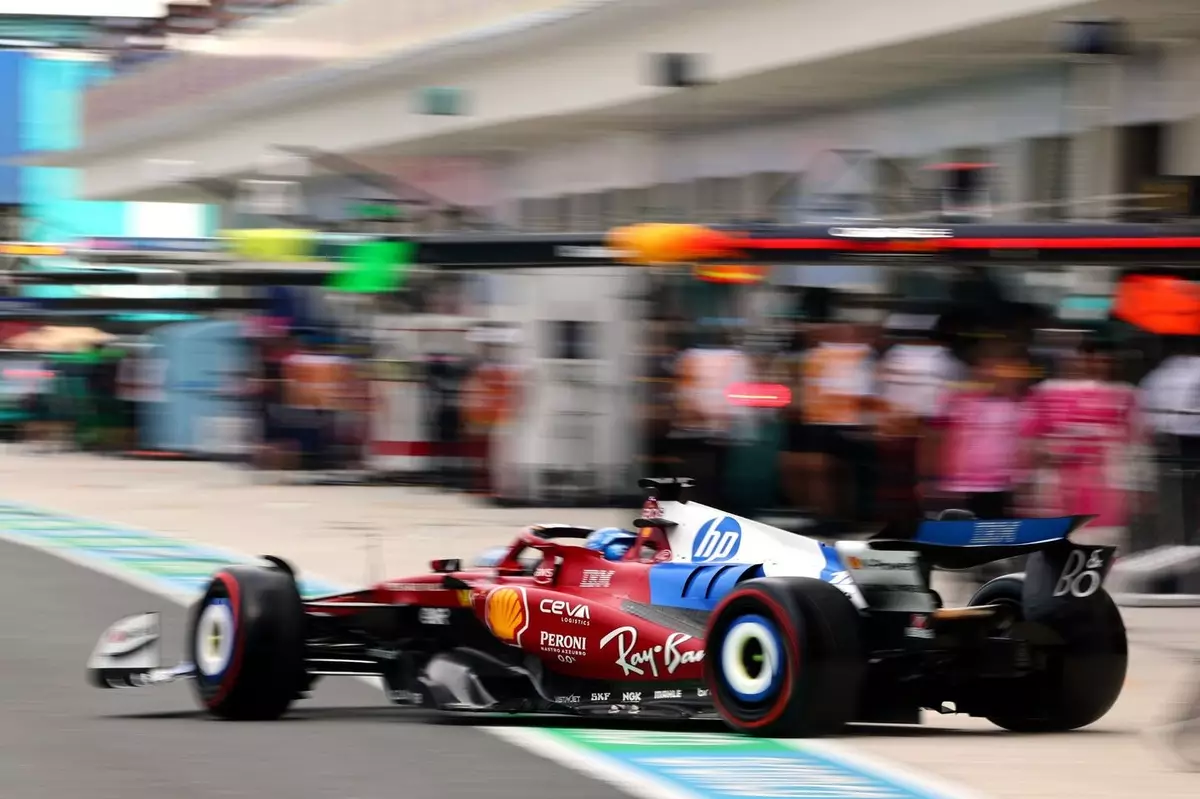Charles Leclerc’s recent experience at the Miami Grand Prix encapsulates the challenges Ferrari faces in the fiercely competitive realm of Formula 1. Despite the team’s assurances that they are harnessing every ounce of speed from their 2025 car, the reality proved to be starkly different. Securing only eighth place in qualifying, Leclerc expressed palpable frustration, emphasizing the gap between Ferrari’s potential and the performance delivered on the track. The disheartening gap of 0.550 seconds to pole-sitter Max Verstappen signifies not just an incremental lapse but a glaring reality about Ferrari’s current standing within the sport.
The notable departure from potential to reality can be summed up succinctly by Leclerc’s candid remarks. He felt satisfied with his qualifying lap, indicating personal skill and dedication. However, this individual resilience was overshadowed by a team performance that starkly lacks the competitive edge to challenge the likes of Red Bull, Mercedes, and even McLaren. In a sport where milliseconds can define races, being “just not fast” is a death knell for ambitions.
Technical Challenges: Downforce and Cornering Performance
Ferrari’s persistent struggles extend beyond just adjustable settings and driver inputs. As Leclerc pointed out, the car’s aerodynamic performance, particularly in low-speed corners, poses significant challenges. The Miami International Autodrome, with its various slower corners, underlines Ferrari’s weaknesses. Here, the performance disparity is magnified – even Williams, often seen as a lower-tier team, managed to outpace Ferrari. This situation paints a grim picture of Ferrari’s engineering choices and raises questions about the direction of their development.
The ongoing sacrifices to maximize downforce have not translated into speed gains. Instead, it seems that each attempted tweak only highlights existing deficiencies while other teams revel in their high-speed advantages. Where Ferrari believed they could optimize their output, they found instead that their fundamental construct lacks the necessary raw power to compete. This inadequacy is particularly distressing given the stakes involved in Formula 1, where every advantage is meticulously exploited.
Lessons from Mistakes: The Sprint Race Blunder
Leclerc’s misadventure before the sprint race is a valuable learning point for the team, notably in terms of risk management and decision-making under pressure. His admission about misjudging the need for intermediates amid standing water reveals a critical oversight that compounded their racing difficulties. This pivotal moment not only cost him valuable practice laps but also set a troublesome tone for the day ahead.
Such lapses are often frowned upon in an environment where precision and preparation are paramount. Leadership and strategic foresight should guide decisions, especially under uncertain weather conditions. The unfortunate incident illustrates that even the best drivers can be impacted by team decisions that fail to align with track realities. It reinforces the need for teams to work in seamless harmony, where every decision, however minor, is pivotal.
The Road Ahead: Seeking Competitive Advantage
For Ferrari, the Miami Grand Prix served as more than just another race; it was a revealing moment underlining the urgency for substantial improvements. The gap in performance, coupled with the mounting frustration, indicates a critical need for introspection and strategic realignment. While Leclerc’s spirit and talent are unquestionable, they cannot transcend the limitations imposed by the machinery.
Progress in Formula 1 requires relentless innovation and adaptation; merely wishing for better performance is inadequate in a landscape dominated by rapid advancements and strategic rivalries. As the season unfolds, Ferrari must prioritize a cohesive approach to re-examine their car’s designs and optimization strategies. The emphasis now must not only lie in the fine-tuning of operational capabilities but also in redefining architectural choices that can amplify competitiveness.
In a sport where speed is king, Ferrari’s team must understand that complacency isn’t an option if they aspire to reestablish their former glory. Each race presents an opportunity for growth, learning, and ultimately, on-track success.

